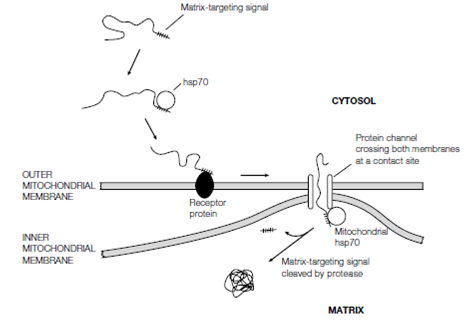Nuclear proteins:
The nucleus has an inner and an outer membrane and is perforated through 3000-4000 nuclear pores. Every pore consists of a nuclear pore complex of more than 100 various proteins organized in a hexagonal array. While little molecules can pass by the pore by free diffusion and large proteins entering the nucleus need a nuclear localization signal. That is four to eight amino acids long and is rich in the positively charged amino acids arginine and lysine as well as commonly containing proline, and is situated internally within the polypeptide chain. The protein is taken by the pore in an ATP- needs step and enters the nucleus without cleavage of the localization signal.

Figure: Uptake of proteins into the mitochondrial matrix; see text for details.